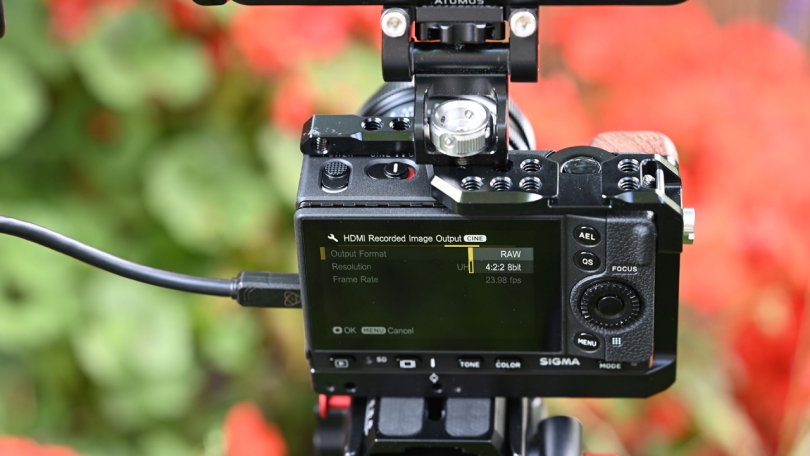
Like most film SLRs from the 1970s, the Olympus OM-10 offered only basic exposure controls and few special features, outside of a self-timer and light meter. Photo: Spline Splinson My first camera, back in the late 1970s, was an Olympus OM-10.
The camera body had dials to adjust shutter speed and ISO/ASA, an exposure compensation dial, and an 'Auto' mode. A built-in light meter helped get the right exposure, and a self-timer allowed for group shots or self-portraits. The most prominent controls on that camera were for managing the film: the film advance lever, rewind knob, and crank. Its user manual makes the OM-10 look a lot more complicated than it really was, but, like all film cameras, its settings were comparatively limited.
The complication of digital cameras can get in the way of taking photos
Today's cameras are computers with lenses, and like computers, they have a plethora of features, far more than any film camera. As with any computer, we need to be able to adjust these many settings. There are menus that allow us to enable, disable, and tweak the many features available, and buttons and dials give us quick access.
But with many modern cameras now offering a dozen or more control points – some customizable with no obvious markings – there's a risk of overwhelming certain users. More importantly, the sheer complicatedness of digital cameras can get in the way of taking photos.
The digital mirrorless E-M1 Mark III, released in 2020, is covered in control points, many of them customizable. But do we really need all those buttons, levers, and dials?
The arrival of the Fujifilm X-E4 has sparked a debate among some users about its relative lack of buttons and dials. In order to create a minimalist, compact camera, or, perhaps, to save money, Fujifilm decided to simplify its design compared to the X-E3. Unlike its predecessor, the X-E4 offers no focus mode selector or rear control dial, and the AF- and AE-lock now share the same button. The 'View mode' button, which lets you toggle between the LCD and EVF, is also gone.
The Fujifilm X-E4 (left) has fewer control points compared to its predecessor, the X-E3 (right).
This paring-down of controls has left some Fujifilm users upset that buttons and dials are missing because they've grown dependent on them. However, it's not like these features are inaccessible; you can change them via the Quick menu, which has a dedicated button on top. Or you can add the settings you use most to 'My Menu', to access them with a couple of presses. But folks want what they're used to.
On the other hand, there are plenty of photographers who don't need or want quick access – via direct controls – to a whole laundry list of settings they may never want to adjust.
The Fujifilm X-E4 is relatively light on control points. Unlike its predecessor, there's no rear dial or 4-way control pad. The screen is touch-sensitive, though.
Obviously, the needs of different photographers vary and a professional will have different requirements than an enthusiast. But the X-E4 is hardly geared towards professionals, and given its target audience, I feel the control layout makes a lot of sense.
I tend to shoot in aperture priority, allowing my camera to take care of shutter speed and ISO. But many photographers like to ignore exposure controls entirely and shoot in Auto or Program mode because it lets them concentrate on making images, instead of spending time fiddling with settings. Shooting this way may actually be good for a lot of folks, not just enthusiasts: It allows you the space to practice compositions and search for that 'decisive moment,' distraction-free. After all, these powerful computers are designed to do a lot without our intervention.
Today's cameras are computers with lenses, and like computers, they have a plethora of features, far more than any film camera
Shooting in Auto/Program is not simply reserved for noobs. Some well-known photographers shoot like this: Magnum photographer Martin Parr shoots in Program mode, and doesn't worry about the settings on his camera. In an interview, he says, 'Manual snobs really get on my nose. Basically, they've got to spend all their time thinking about the aperture. Why not take advantage of modern technology? Program mode pretty much gets it right every time. '
Street photographer Erik Kim prefers Program mode because it prevents mistakes when he changes to locations with different lighting. And some even joke that the 'P' on a camera stands for paparazzi mode, as these photographers often don't have time to change settings.
Fujifilm reduced the number of control points on the X100V model (left), which replaced the X100F (right). Most notably, the four-way controller was removed; could this be the result of user feedback/button fatigue?
Ultimately, over-complicated cameras present a hurdle for new users. And if camera companies want to truly compete for relevancy with smartphones, they need to offer models that are as easy-to-use as a smartphone but offer substantially better image quality. And Fujifilm isn't alone in offering something close to this: the Canon M200 also fits the bill nicely, as do the Sony a6100 and Nikon Z50.
There will always be complicated cameras available for those who want the utmost control. But having a plethora of control points doesn't necessarily make a camera any better – for some, it makes it worse. To that point: while the X-E4 may not be the perfect evolution of the X-E3, I find it plenty capable, and more importantly, an uncomplicated joy to use.
. dpreview.com2021-5-8 17:00








